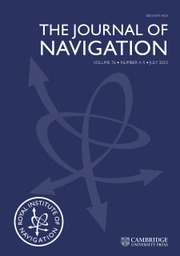No CrossRef data available.
Article contents
The Accuracy of Dead Reckoning in the Air
Published online by Cambridge University Press: 18 January 2010
Extract
I am of the opinion that the figures in Mr. Durst's paper have been obtained primarily from the main civil operators and that the results are not necessarily valid for military aircraft. Before accepting Mr. Durst's paper as a reference work for all aircraft it would be necessary to know the answers to the following questions:
(a) Were the navigating officers of each aircraft experienced practising navigators or were they perhaps ‘third officers’ occupying the seat to obtain navigational experience?
(b) Were the aircraft equipped with and did the navigators use Loran equipment? If so, were the operators adept at using sky-wave signals?
(c) Were the aircraft fitted with air mileage units and air position indicators?
(d) Were the aircraft fitted with remote indicating compasses with performance characteristics equal to those of the G3 and G4B (CL2)?
(e) Were the radio compasses swung at regular intervals?
When I was a member of the Transport Command Examining Unit (1949–51) one of my tasks was to assess logs and charts of experienced navigators flying the main trunk route from the United Kingdom to Australia. I can say quite confidently that as far as the 200 kt. aircraft are concerned a D.R. error of 8 n.m. per hour proved to be an excellent working approximation. Seldom did circles or ellipses of errors around fixes and D.R. positions not intersect or give a ‘sensible’ wind.
Information
- Type
- Forum
- Information
- Copyright
- Copyright © The Royal Institute of Navigation 1956

